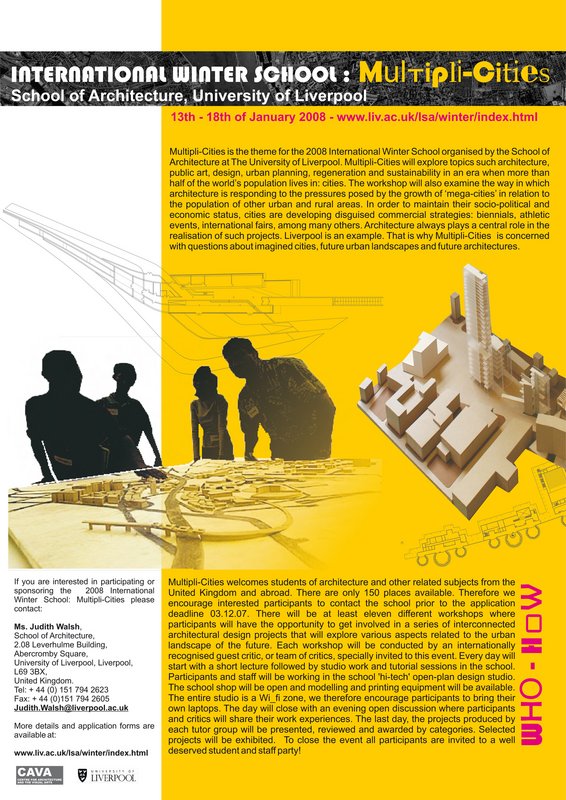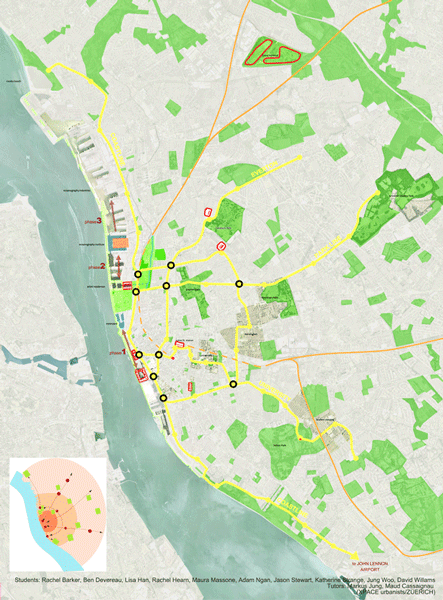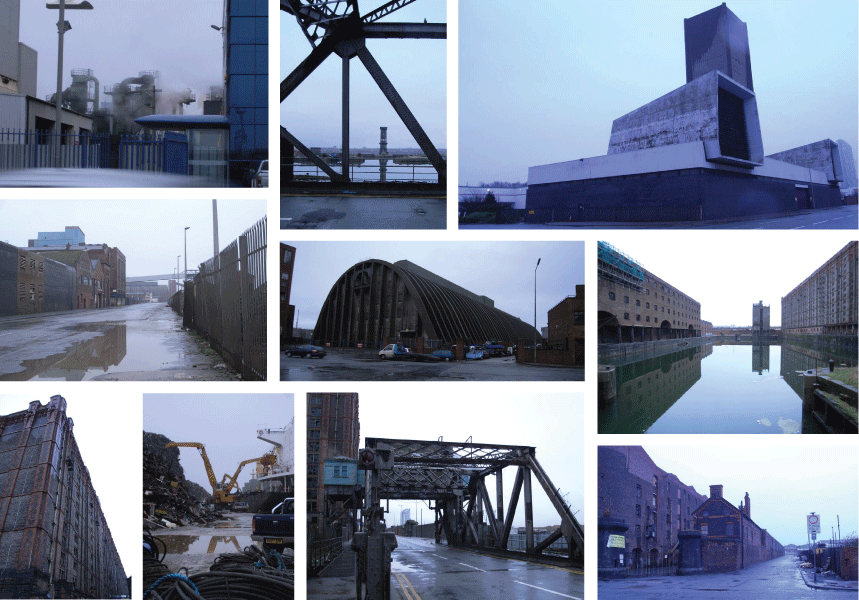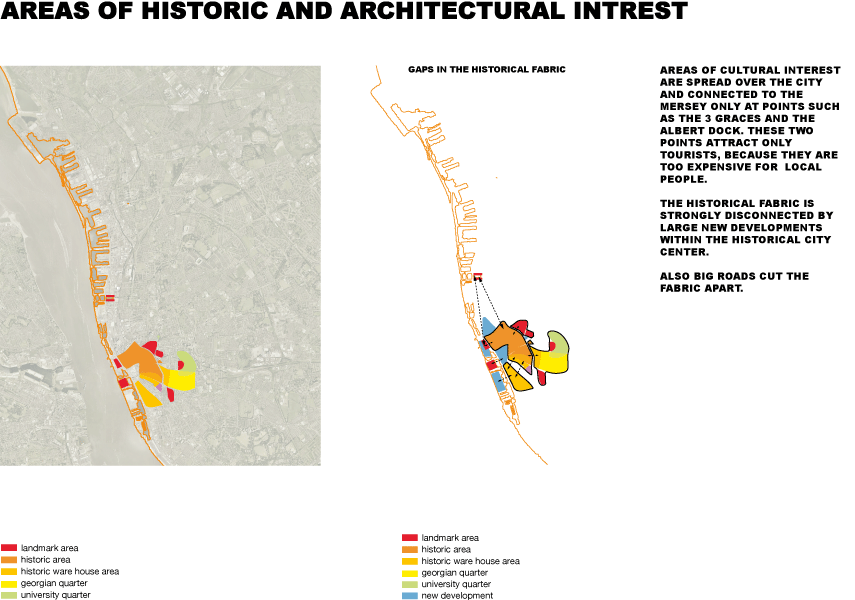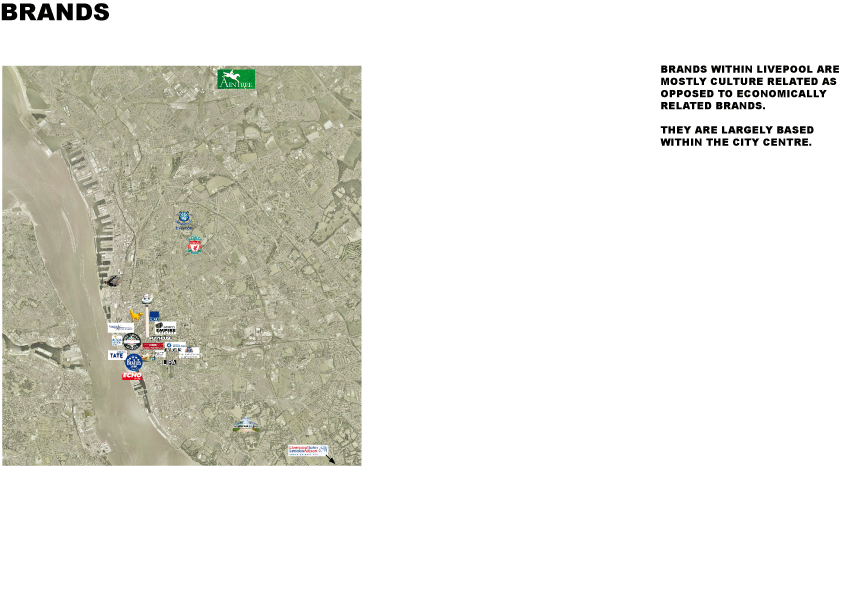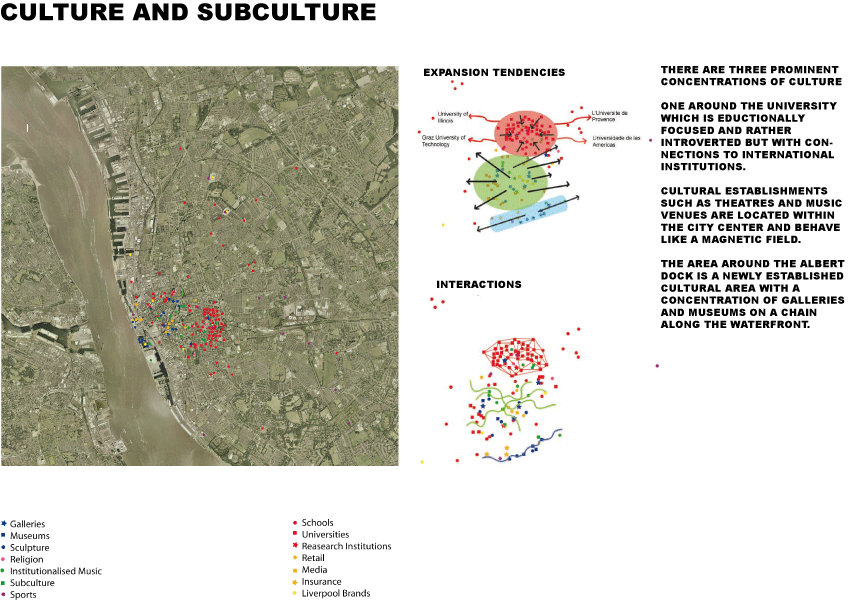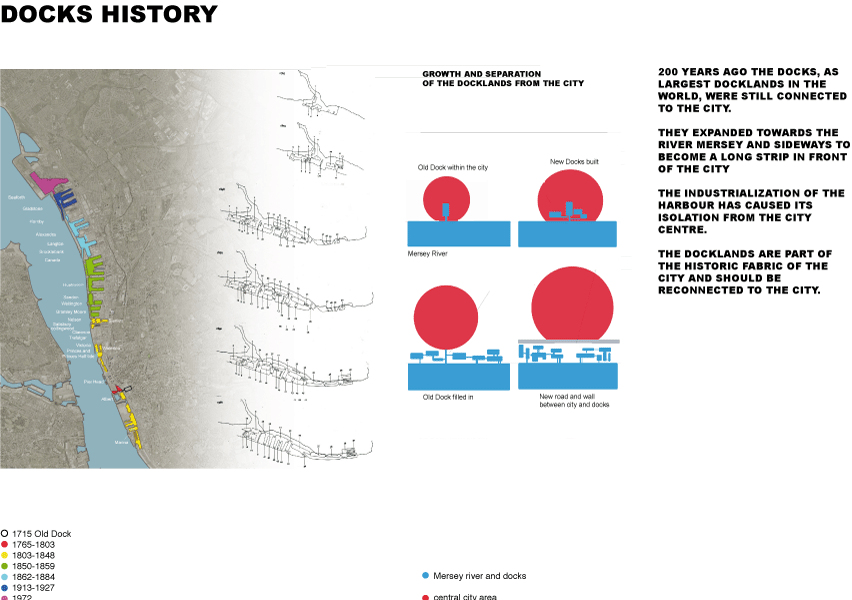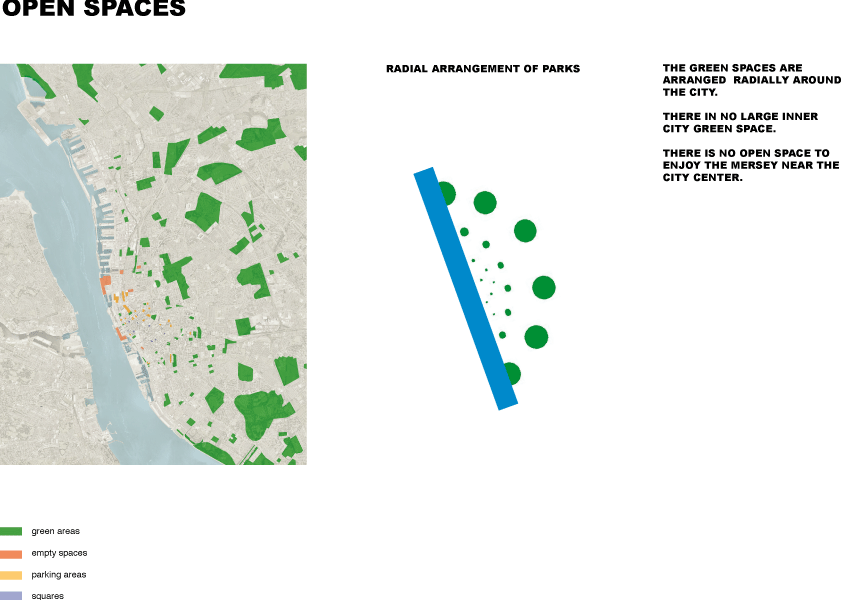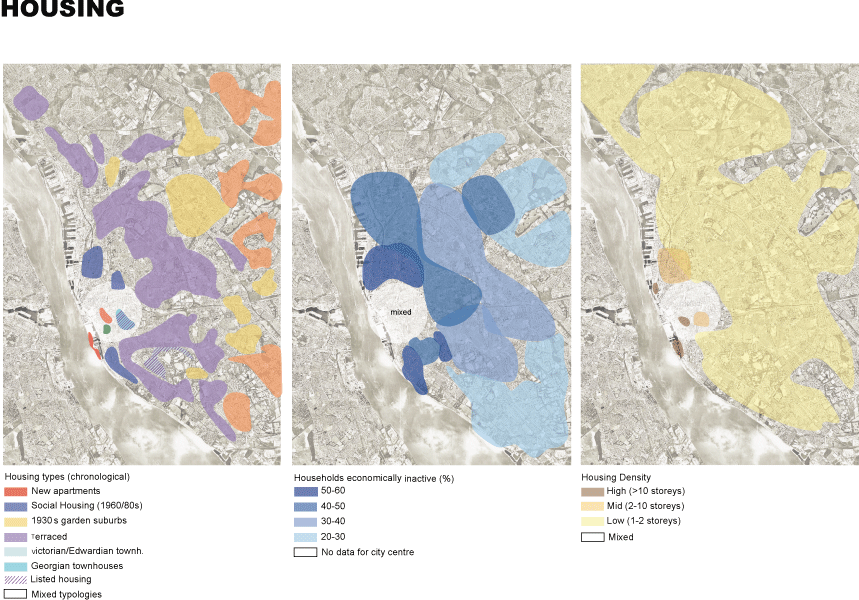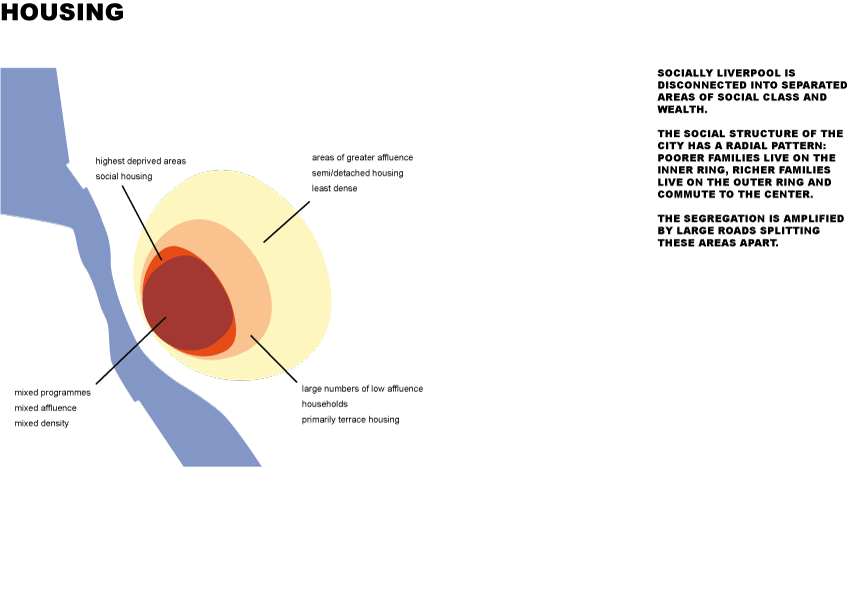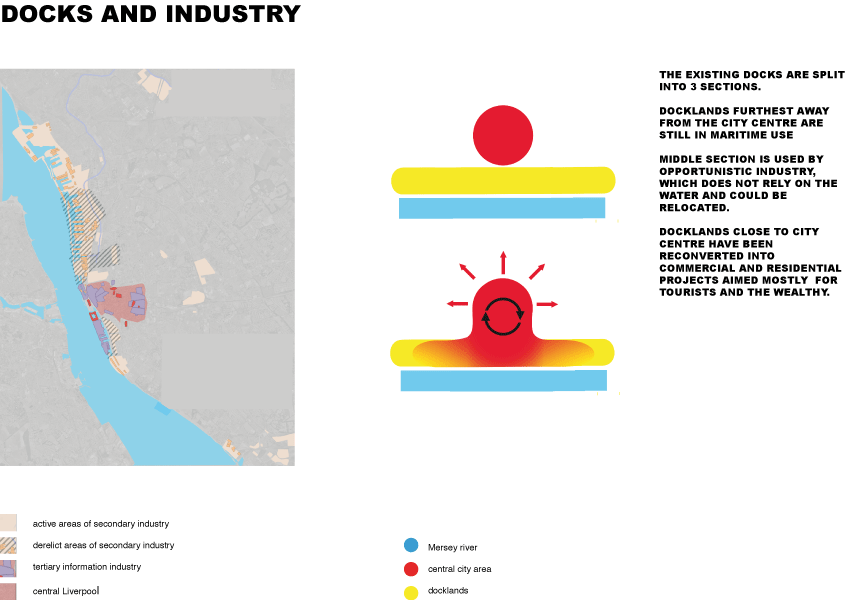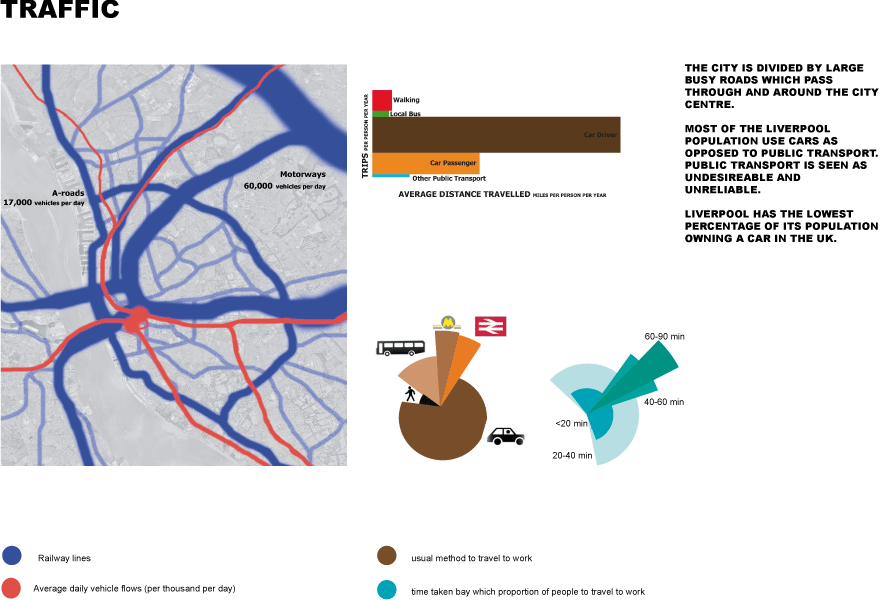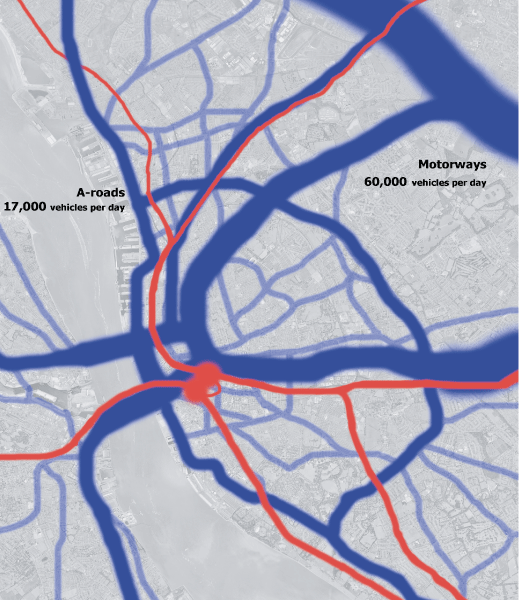| code | cool city - second city! |
| project | multipli-cities workshop |
| type | international winterschool: liverpool european capital of culture 2008 |
| size | metropolitan scale |
| client | liverpool university, school of architecture |
| location | liverpool, uk |
| year | 2008 |
Cool City - Second City!
Presently the world is undergoing an almost unnoticed revolution: for the first time more people are living in cities than in the countryside. The 21st century is truly the first urban century in mankind. In Asia, due to the dramatic economic growth, old Mega-Cities such as Mumbai or Shanghai have re-emerged as cosmopolitan urban centres. At the same time, new Monster-Cities are sprawling in the Third World, totally uncontrolled. This is one noticeable trend, which considered in isolation might be misleading. Although the biggest cities are growing bigger, the middle-sized cities are growing faster. One in two urban inhabitants lives in a city of around 500.000 people.
Thesis
Particularly in the western world, it is not the abused and overpopulated capitals that are booming, but the socalled “Second Cities“, which often are culturally more exciting: Barcelona instead of Madrid, San Francisco instead of Los Angeles, Hamburg instead of Berlin. In a globalized world increasingly focused on knowledge and technology,the Second Cities succeed better to flourish and to renew capitalism independently from the big capital centres. Second Cities succeed better to attract innovative companies and young
creative people. Urban studies show, that cities exceeding the critical population of 6 million inhabitants see a decrease in their economic productivity. This is due to a variety of factors: long commuting hours, unaffordable rents, decreasing life quality, urban pollution and general chaos. Only the inner-city centres still appeal– but just to a small privileged minority who can afford to live there. The crisis of the Mega – Cities is the chance of the Second Cities. Cool are cities that have a human scale and offer quality life and career opportunities.
Cool are cities that attract via their genius loci. They have a recognizable elite which produces economic progress and prosperity. Cool is Barcelona, cool is Amsterdam.
Cool are the cities where the creative class lives in a dynamic field of mutual inspiration. This heterogenic class is formed by designers, couturiers, computerspecialists, software producers, musicians, scientists, engineers, poets, analysts, journalists, actors – a colourful coalition producing new ideas and generating innovation. Knowledge centres and high-tech industries settle around them. The creative class is the catalyst for the city transformation - from an age of post-industrialisation to an age focused on knowledge. So what do cities need, to attract this demanding creative class beyond all practical issues? Cool cities have a special spirit, generated through atmosphere, creative culture, lifestyle, art de vivre…
This genius loci, which is hard to define, is what makes a place spezial and desirable, which brings us to stay and enjoy the place, just more than any other. The genius loci makes the difference between any city and the cool Second City.
It is founded on the history of the place as well as on ist contemporary culture, on ist topographical setting as well as on its architecture, on its cultural geist as well as on its cultural activities. The genius loci is something that can be found and strengthened, cultivated and reactivated- but it cannot be created ex nihilo. Cool are cities that have an active genius loci! There is no ideal path for a city to become a Cool City. Every city has to find its own individual way based on its historical background, ist geographical context and its cultural and political possibilities. To become a Cool City, cities need to identify and activate the heritage of their own genius loci.
Objective
The objective of our workshop is to analyse Liverpool’s potentials as a Second City. We want to identify areas and key elements within Liverpool’s urban fabric and surroundings, which form its genius loci. We want to work out methods on how to (re-) activate these elements so that they could act as generators, envisioning Liverpool as a Second City. We will work on strategies, on how to trace and transform these areas and elements into new vectors of growth. Thereby Liverpool is thought asone example for testing the Second Cities strategy.
